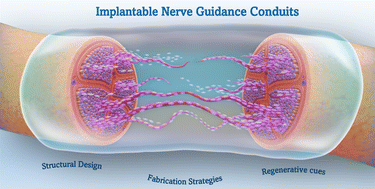Beyond the limiting gap length: peripheral nerve regeneration through implantable nerve guidance conduits
Abstract
Peripheral nerve damage results in the loss of sensorimotor and autonomic functions, which is a significant burden to patients. Furthermore, nerve injuries greater than the limiting gap length require surgical repair. Although autografts are the preferred clinical choice, their usage is impeded by their limited availability, dimensional mismatch, and the sacrifice of another functional donor nerve. Accordingly, nerve guidance conduits, which are tubular scaffolds engineered to provide a biomimetic environment for nerve regeneration, have emerged as alternatives to autografts. Consequently, a few nerve guidance conduits have received clinical approval for the repair of short-mid nerve gaps but failed to regenerate limiting gap damage, which represents the bottleneck of this technology. Thus, it is still necessary to optimize the morphology and constituent materials of conduits. This review summarizes the recent advances in nerve conduit technology. Several manufacturing techniques and conduit designs are discussed, with emphasis on the structural improvement of simple hollow tubes, additive manufacturing techniques, and decellularized grafts. The main objective of this review is to provide a critical overview of nerve guidance conduit technology to support regeneration in long nerve defects, promote future developments, and speed up its clinical translation as a reliable alternative to autografts.

- This article is part of the themed collection: Biomaterials Science Recent Review Articles, 2024


 Please wait while we load your content...
Please wait while we load your content...